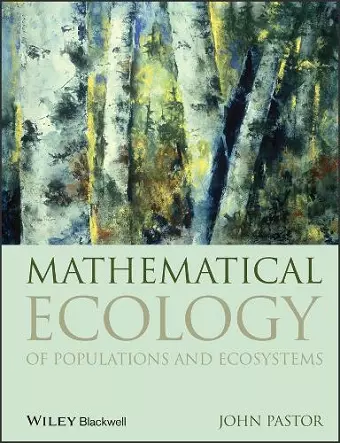Mathematical Ecology of Populations and Ecosystems
Format:Paperback
Publisher:John Wiley and Sons Ltd
Published:18th Jul '08
Currently unavailable, and unfortunately no date known when it will be back

MATHEMATICAL ECOLOGY
Population ecologists study how births and deaths affect the dynamics of populations and communities, while ecosystem ecologists study how species control the flux of energy and materials through food webs and ecosystems. Although all these processes occur simultaneously in nature, the mathematical frameworks bridging the two disciplines have developed independently. Consequently, this independent development of theory has impeded the cross-fertilization of population and ecosystem ecology. Using recent developments from dynamical systems theory, this advanced undergraduate/graduate level textbook shows how to bridge the two disciplines seamlessly. The book shows how bifurcations between the solutions of models can help understand regime shifts in natural populations and ecosystems once thresholds in rates of births, deaths, consumption, competition, nutrient inputs, and decay are crossed.
Mathematical Ecology is essential reading for students of ecology who have had a first course in calculus and linear algebra or students in mathematics wishing to learn how dynamical systems theory can be applied to ecological problems.
"Nevertheless, it is an excellent summary which will sweep away the cobwebs from the mind of someone who has learnt this stuff at some time in the past. . . It would be ideal as a text for a course taught in a mathematics department, to convince mathematics students that their skills in differential equations can be applied to ecological problems." (Austral Ecology, 2011)
"Its best feature a the scientific soundness t hat permeates the whole book, founded on a robust mathematical treatment of most of the arguments." (Ecoscience, June 2010)"Pastor (Univ. of Minnesota, Duluth) does an admirable job of bridging the gap, providing a work that should quickly become a popular choice for upper-level undergraduate or graduate courses in both disciplines." (CHOICE, January 2009)
ISBN: 9781405177955
Dimensions: 244mm x 188mm x 23mm
Weight: 839g
352 pages